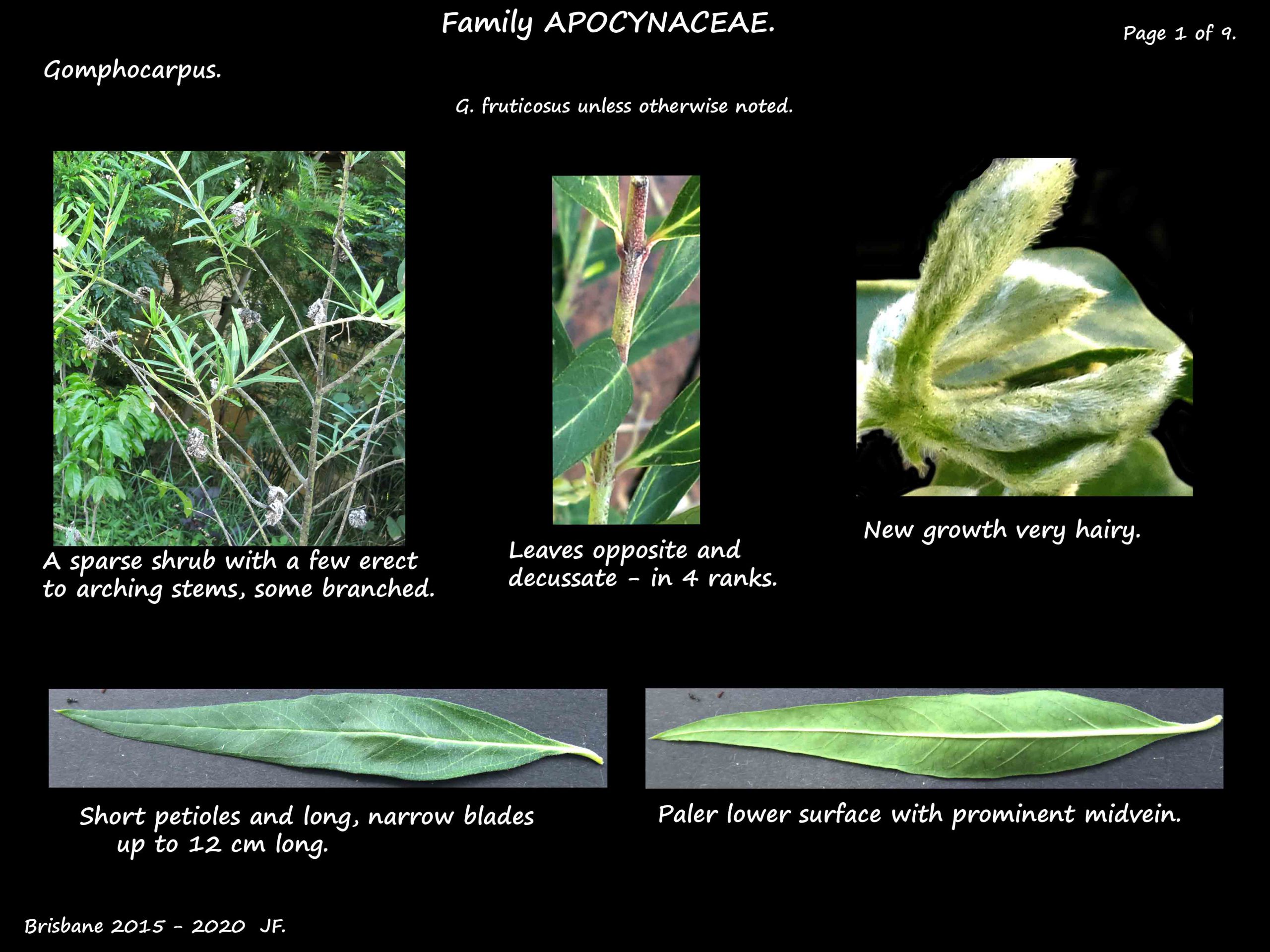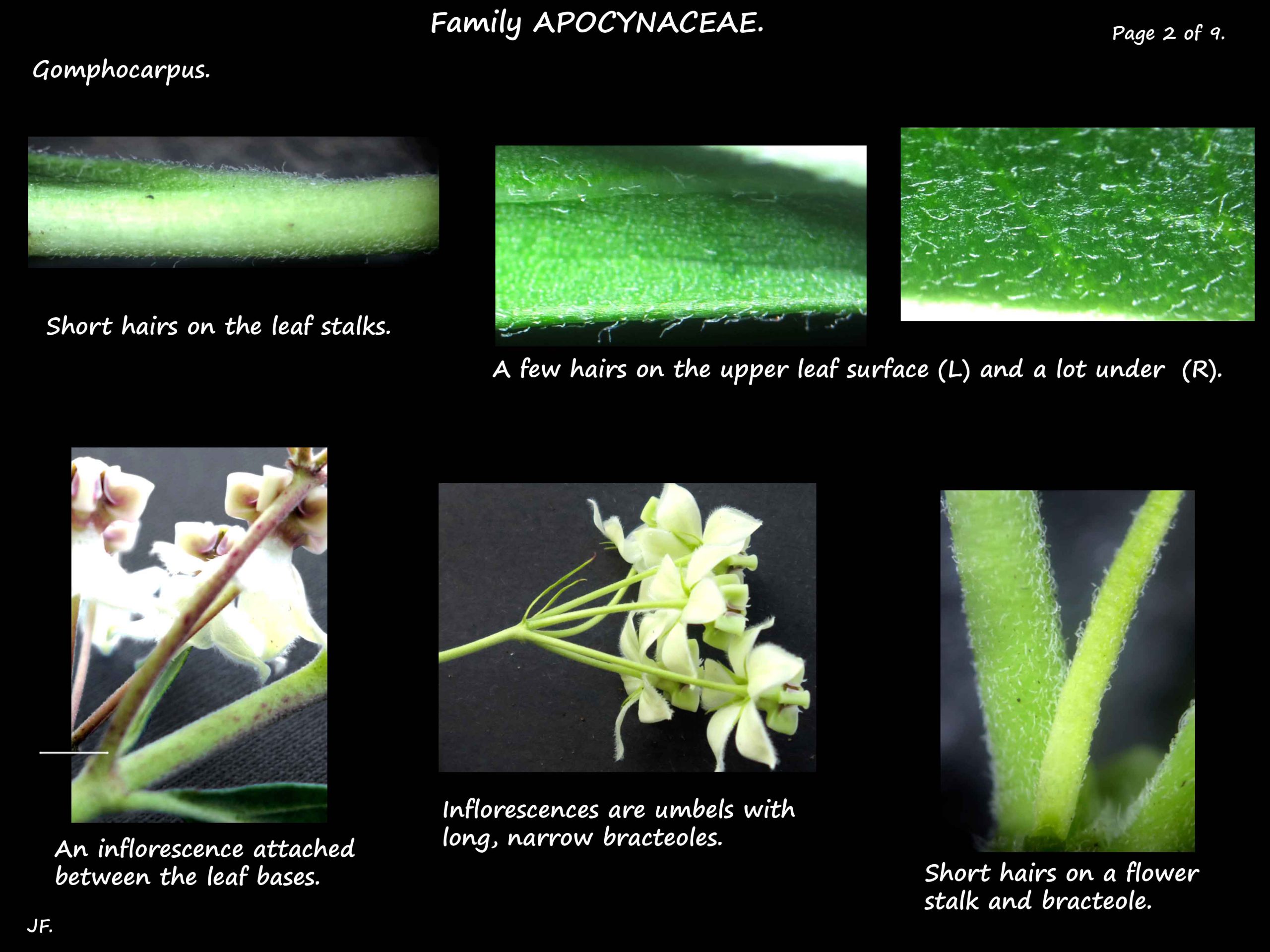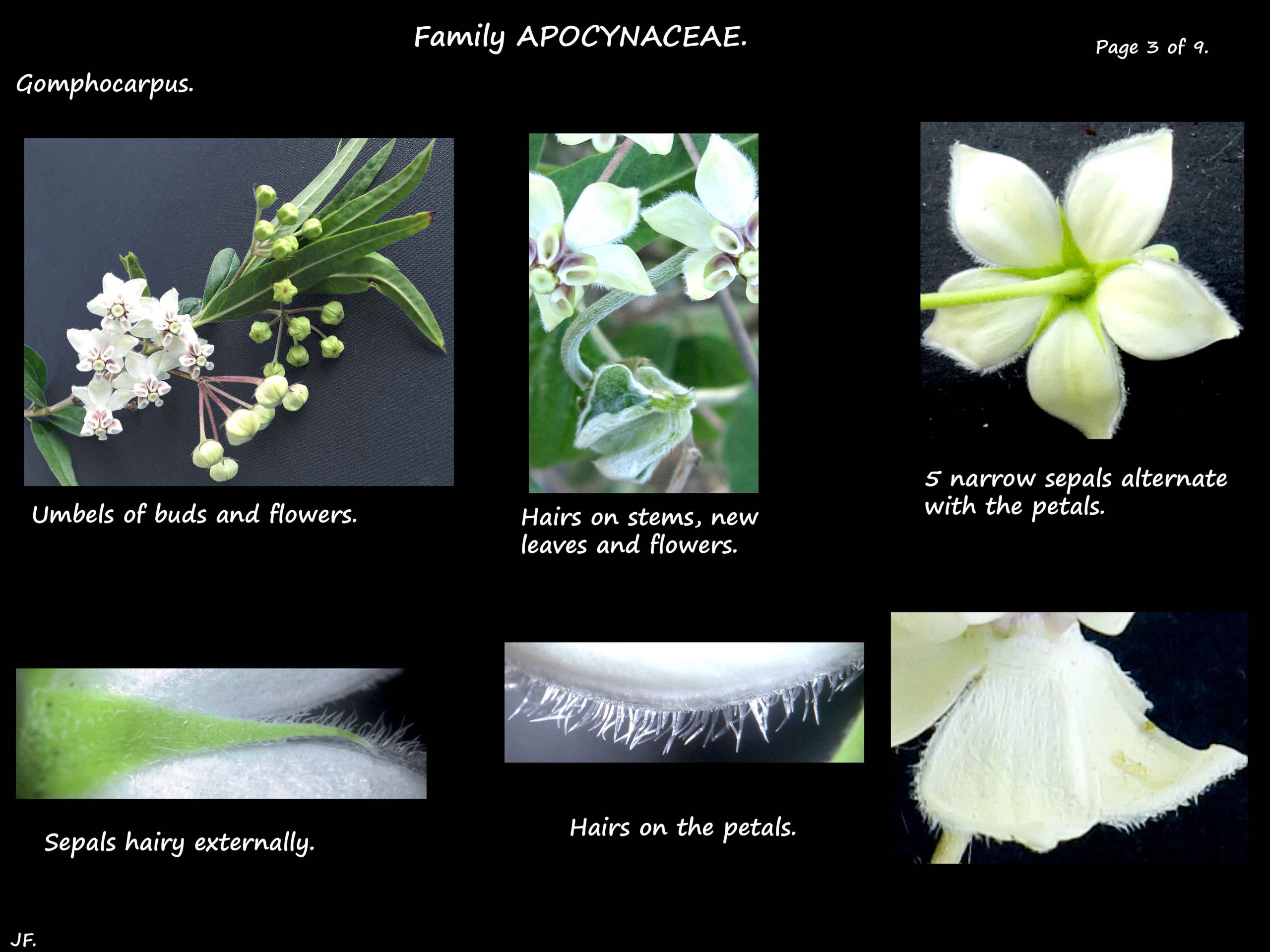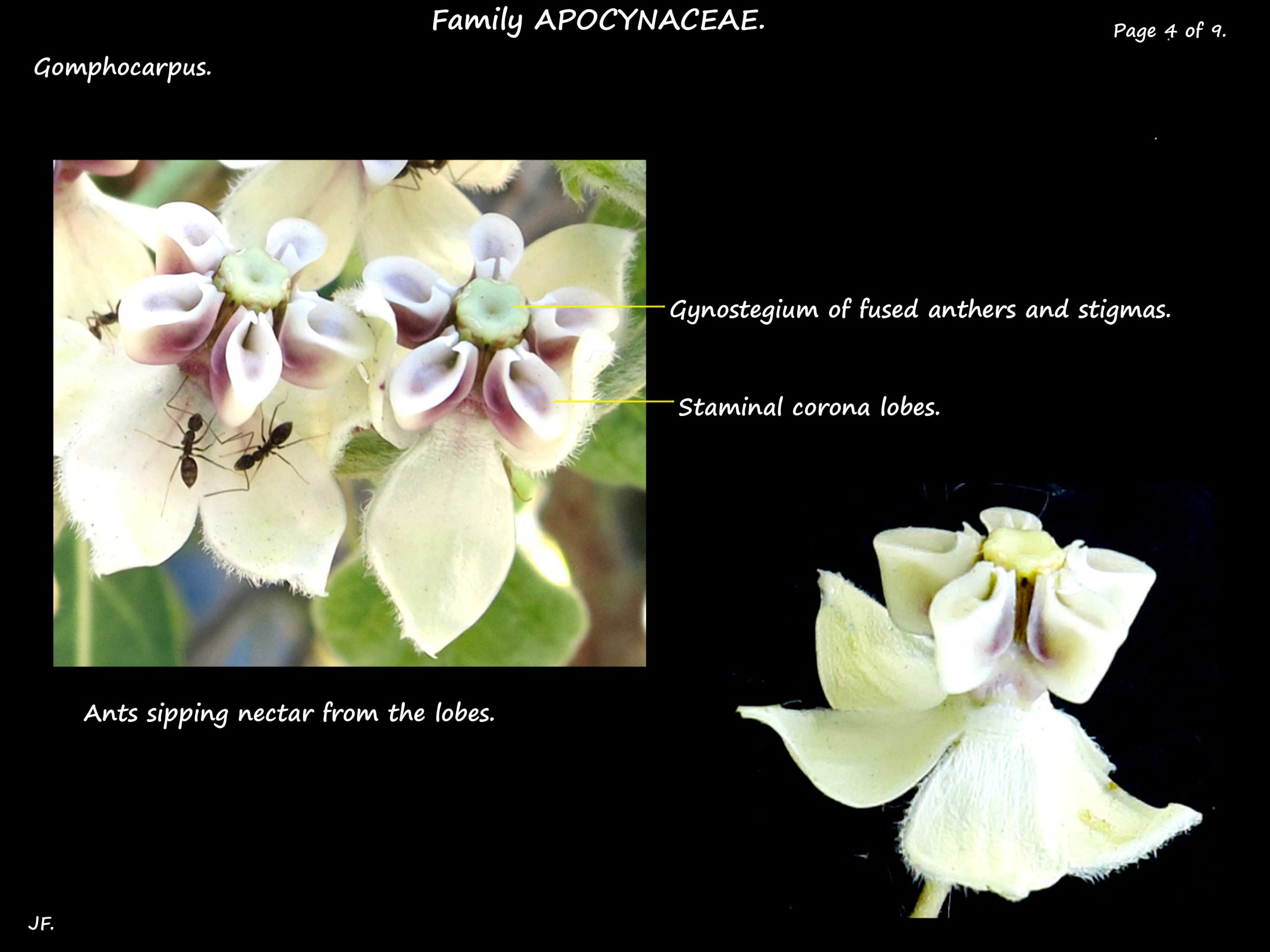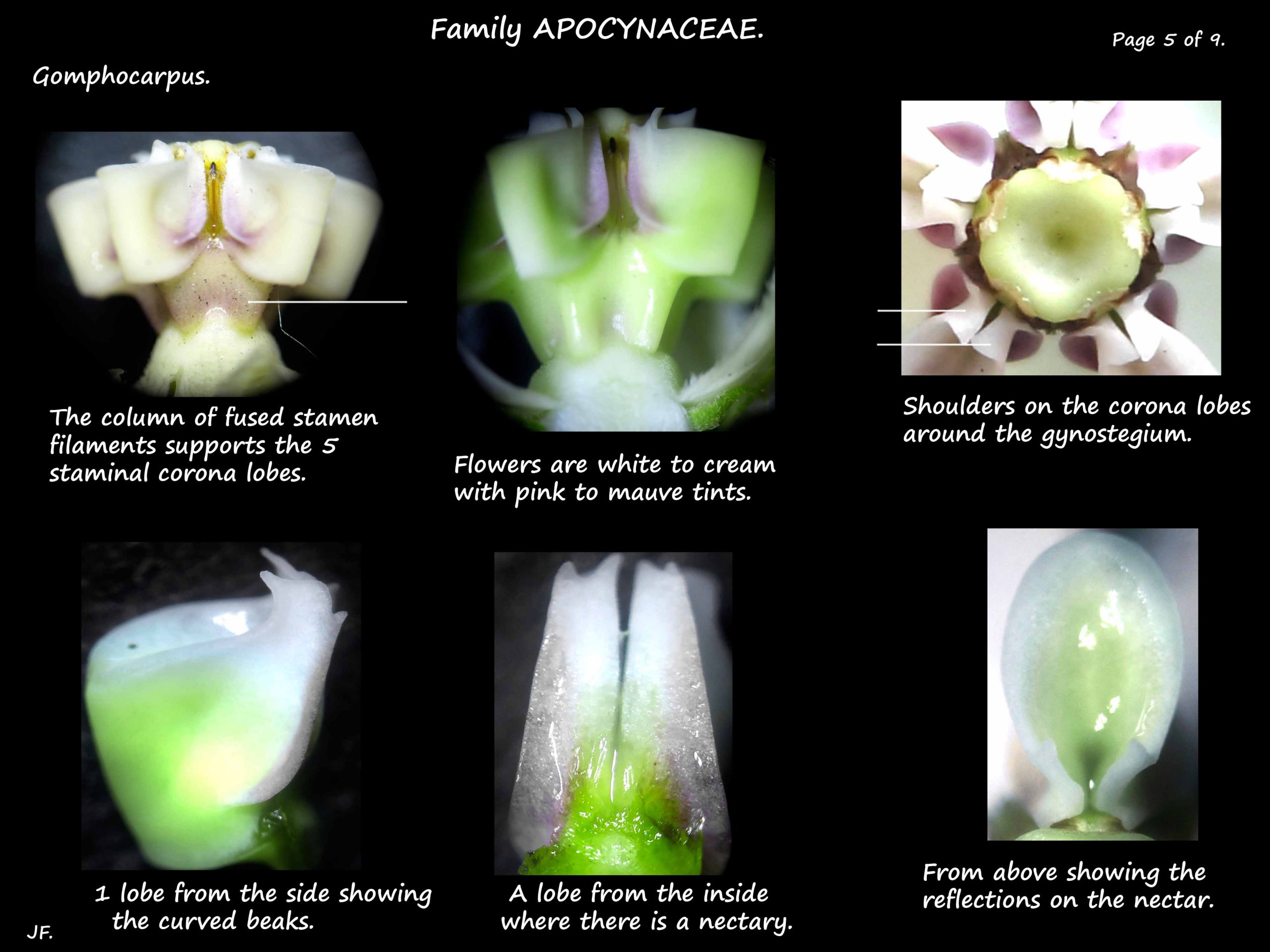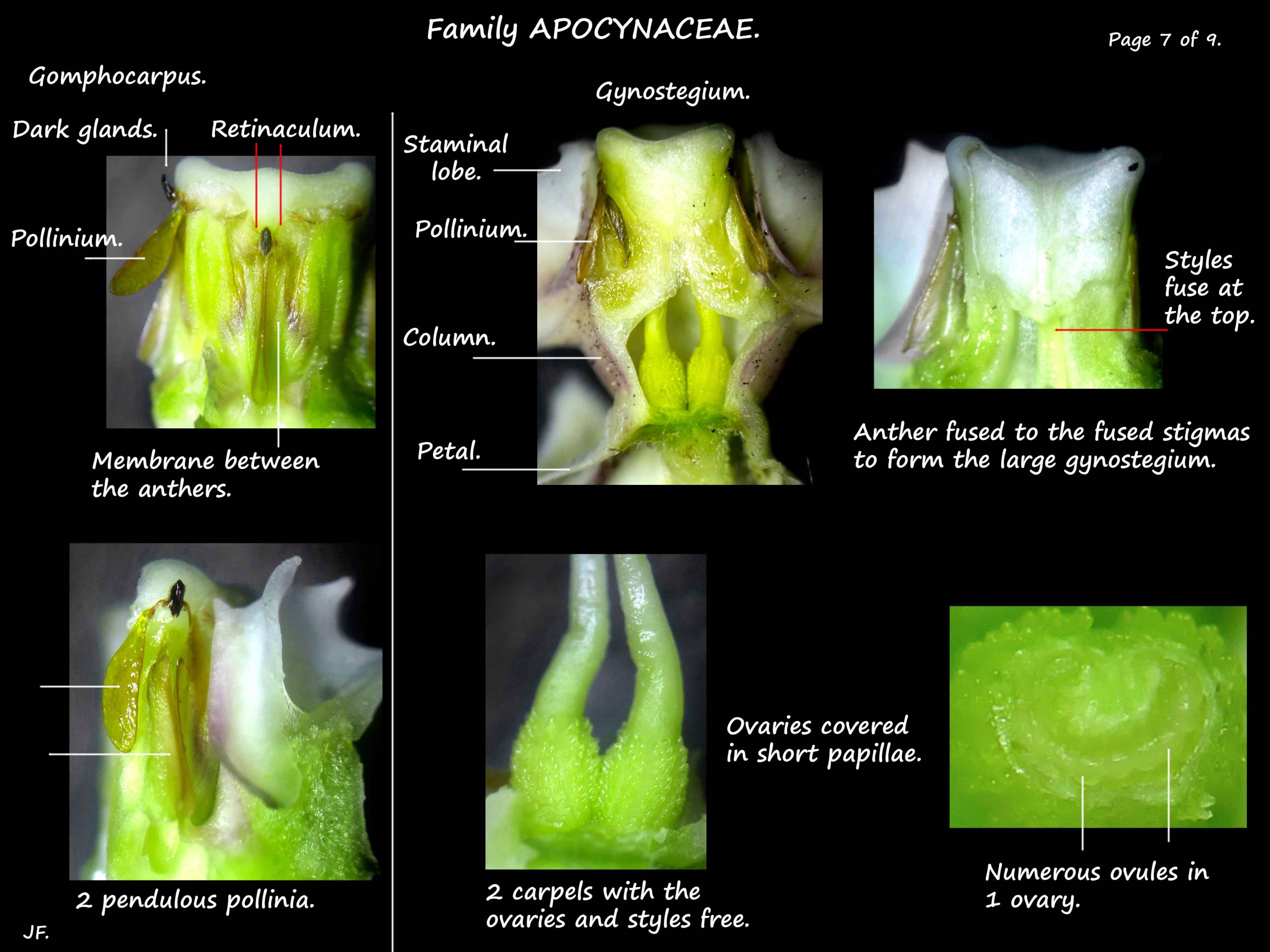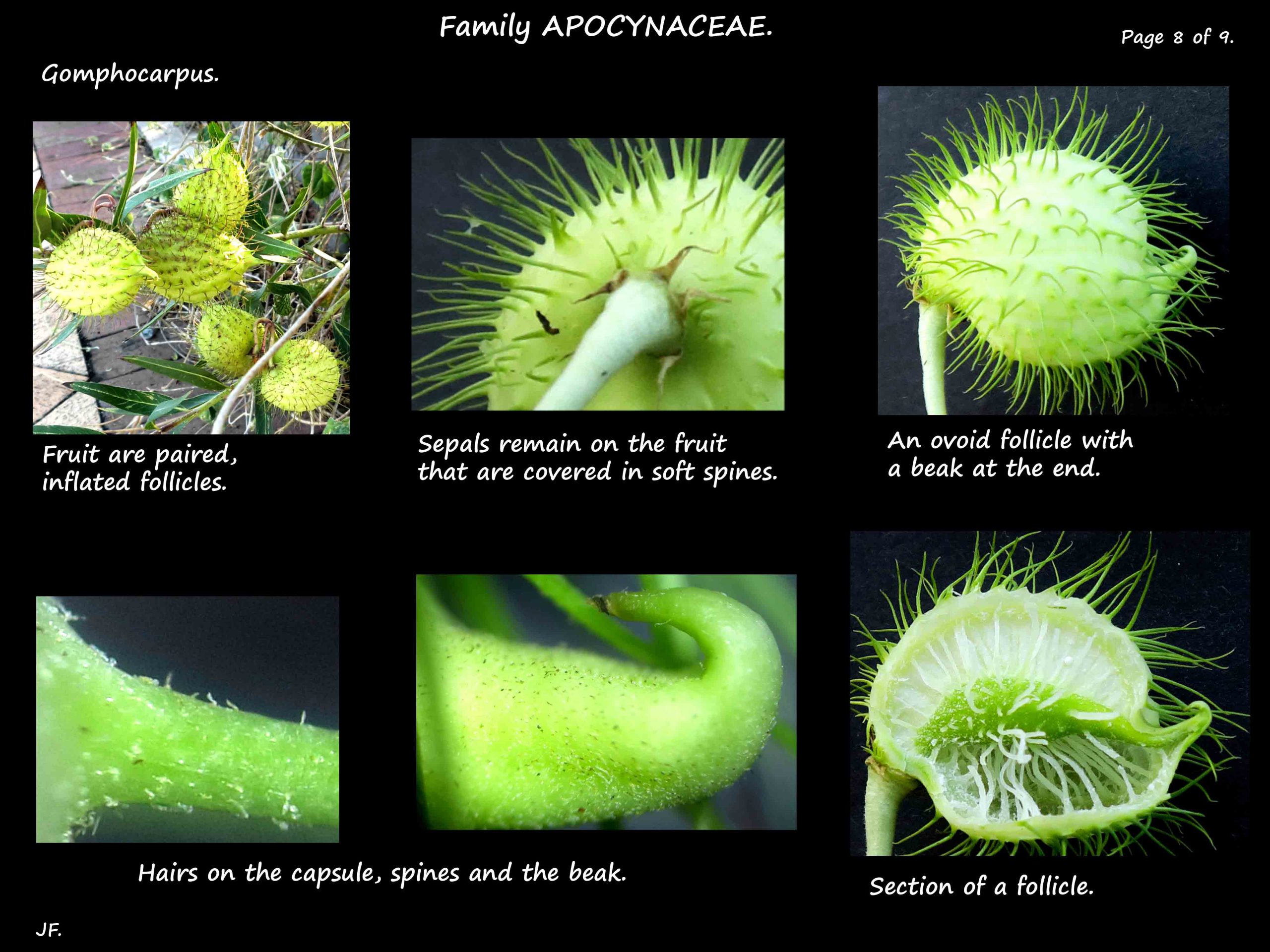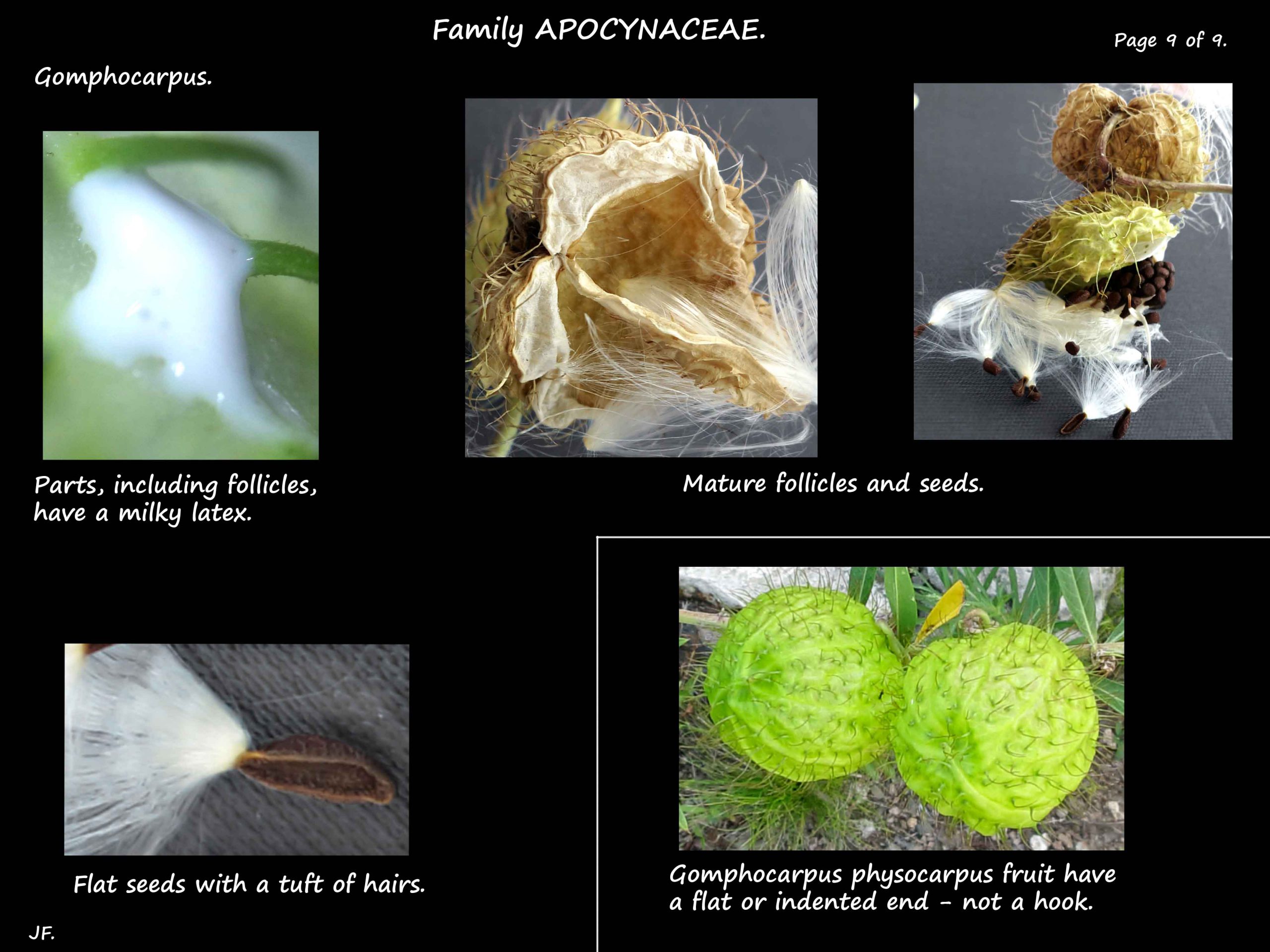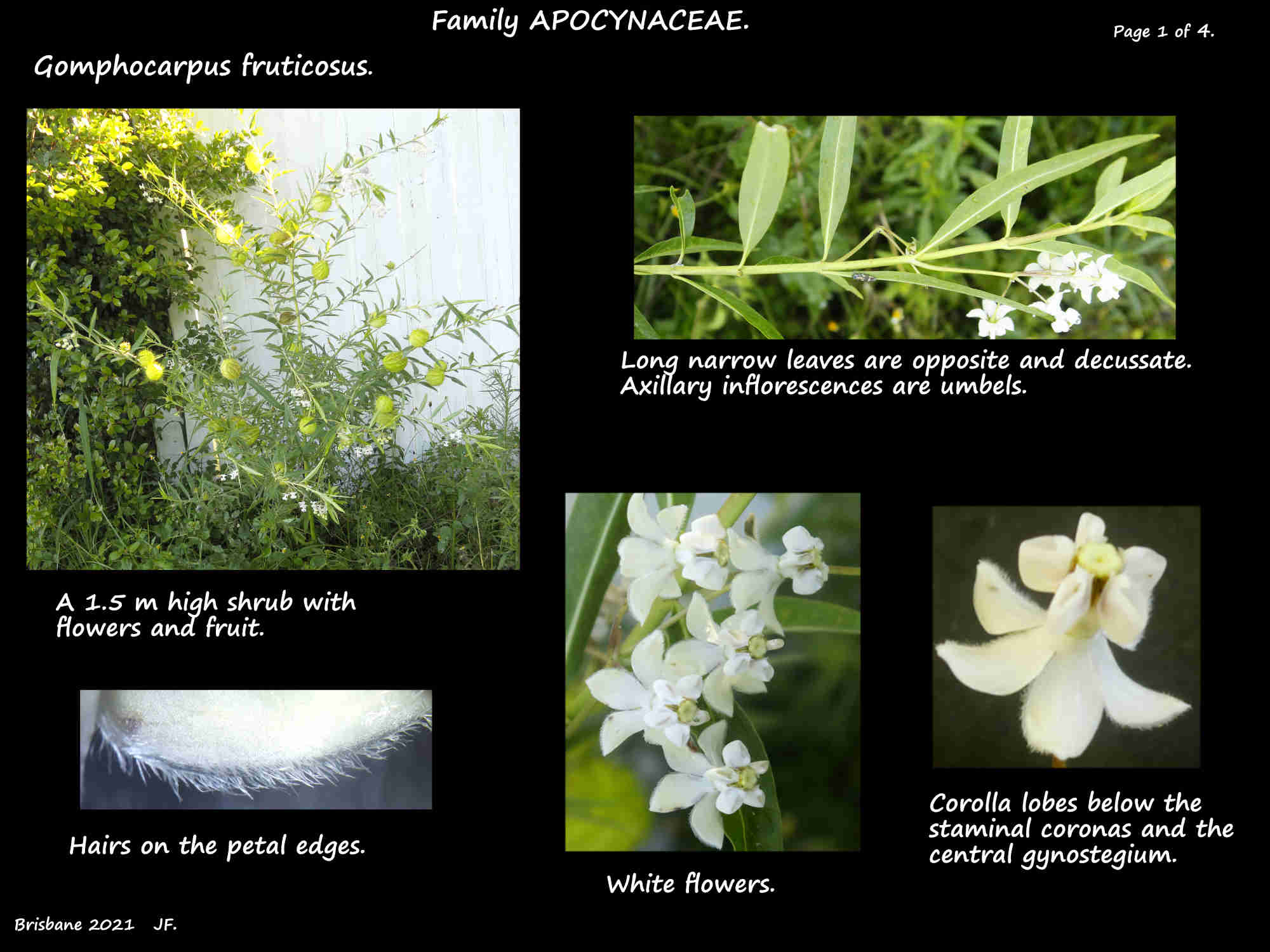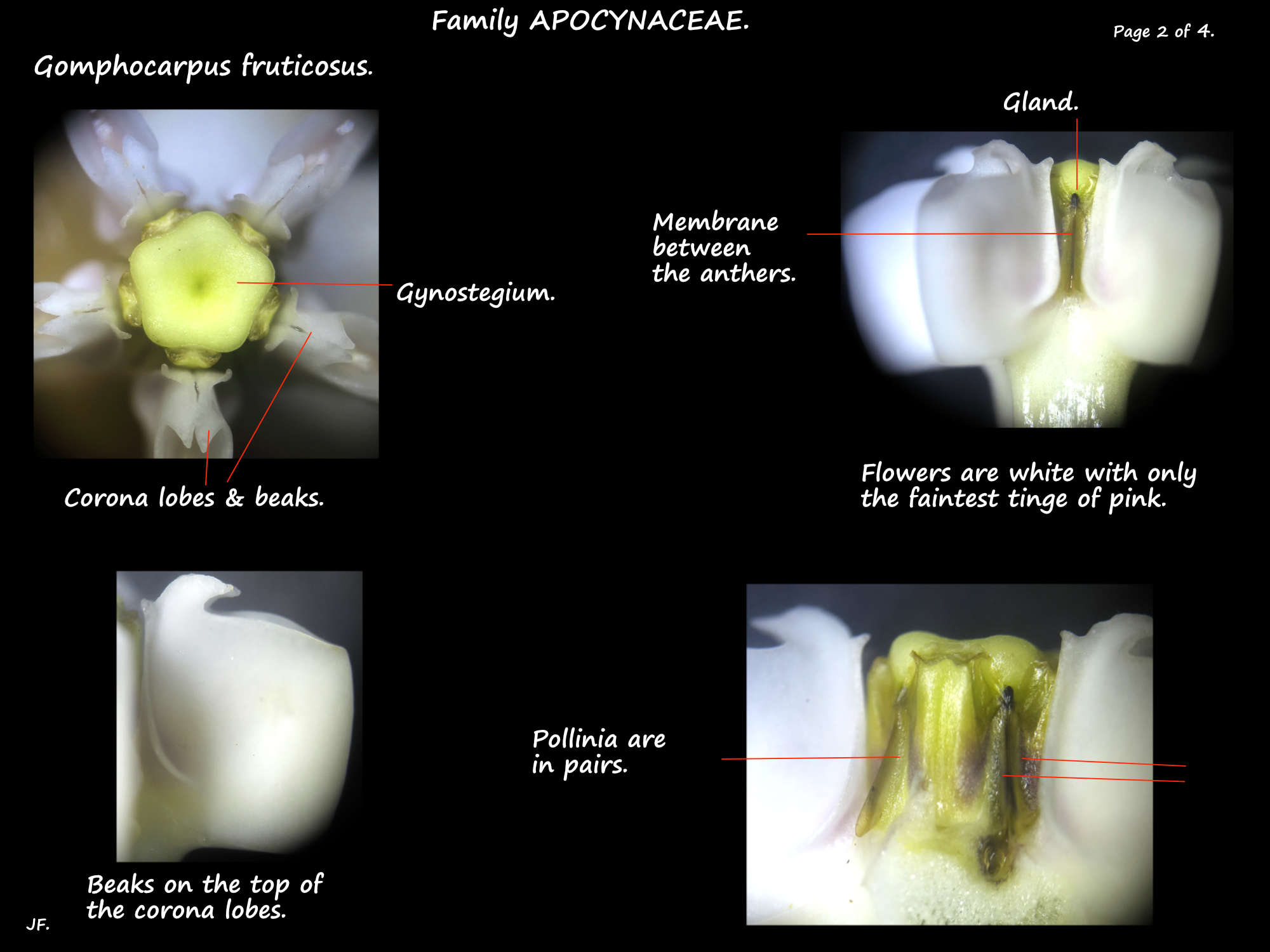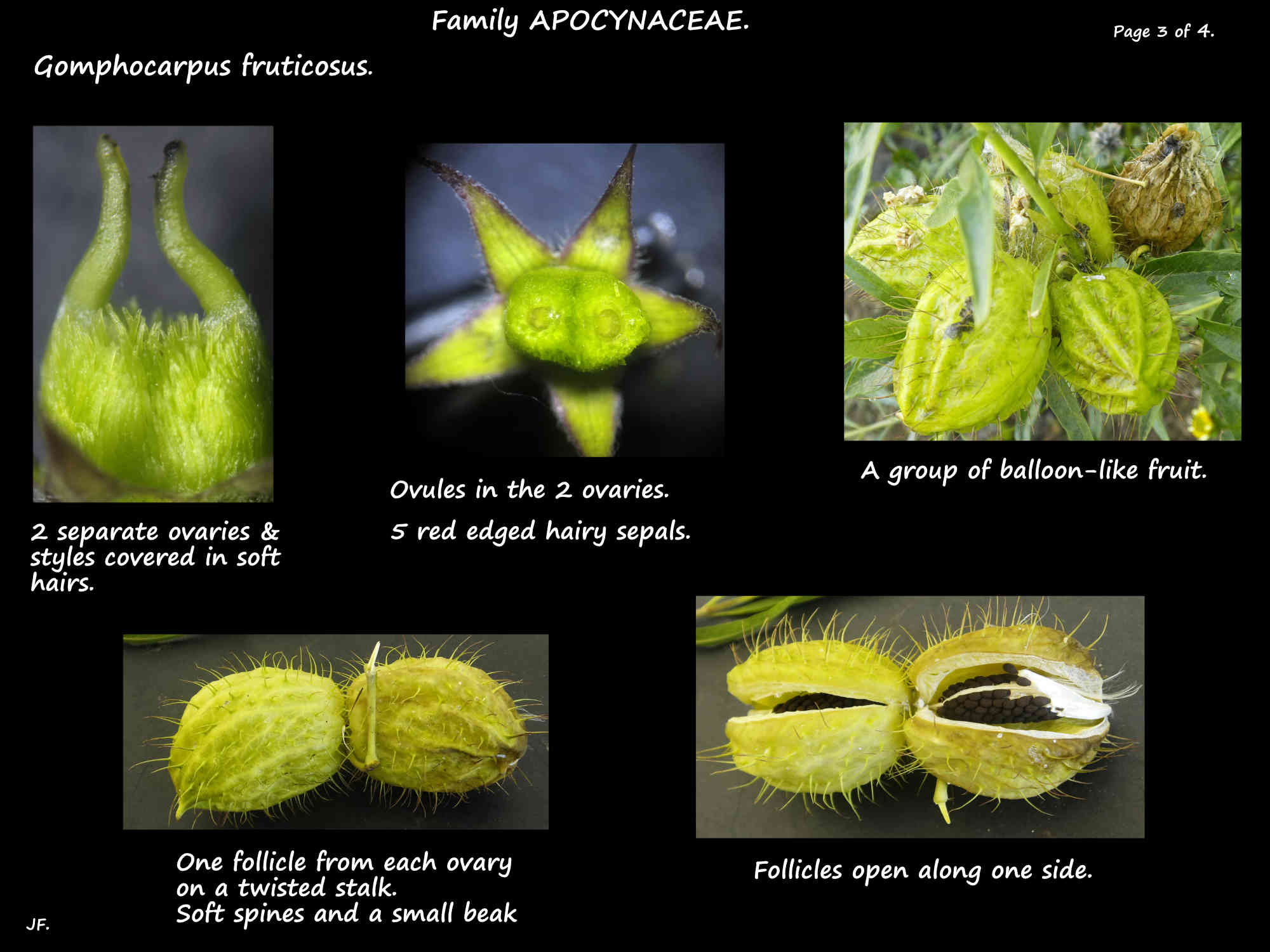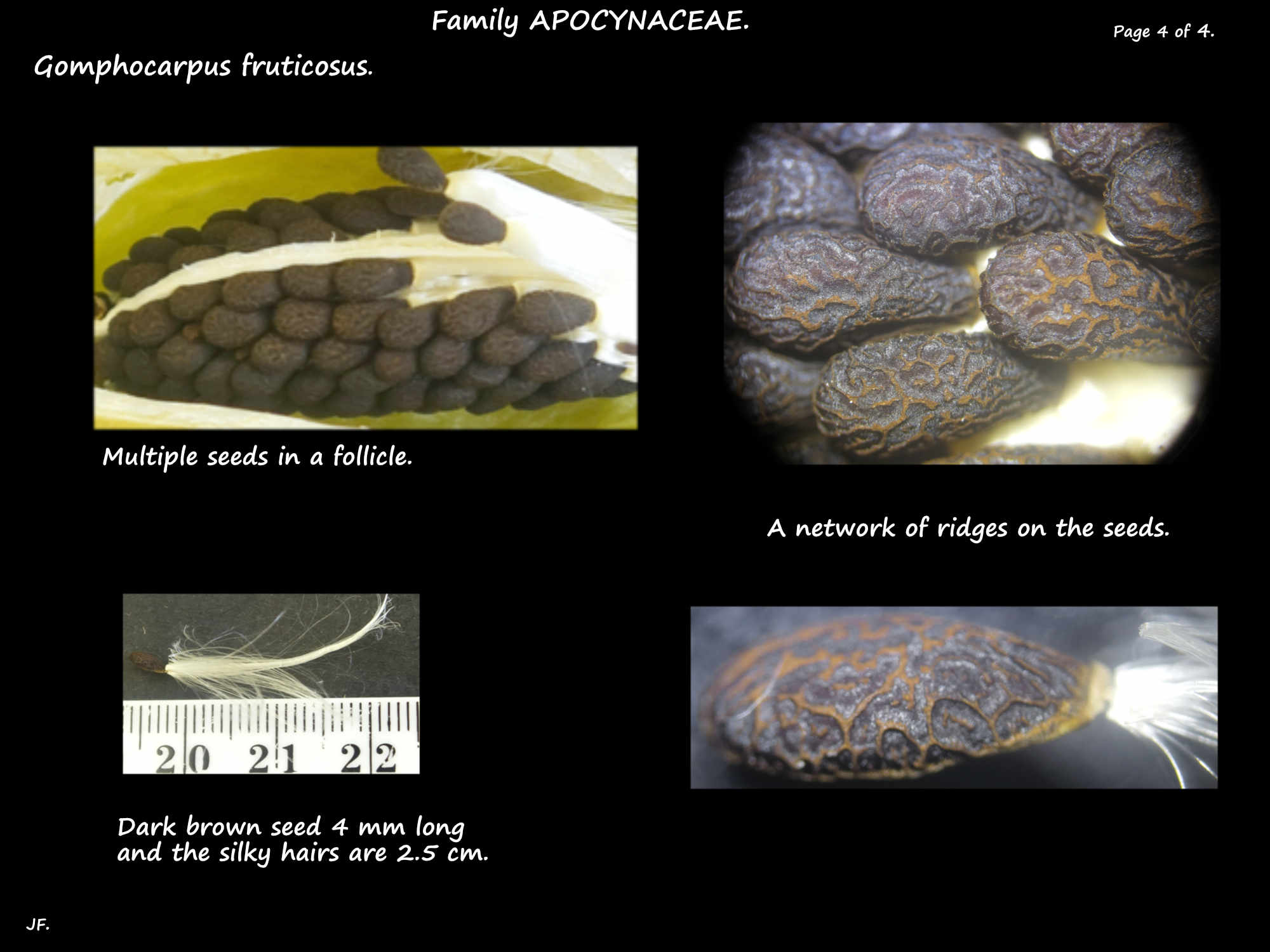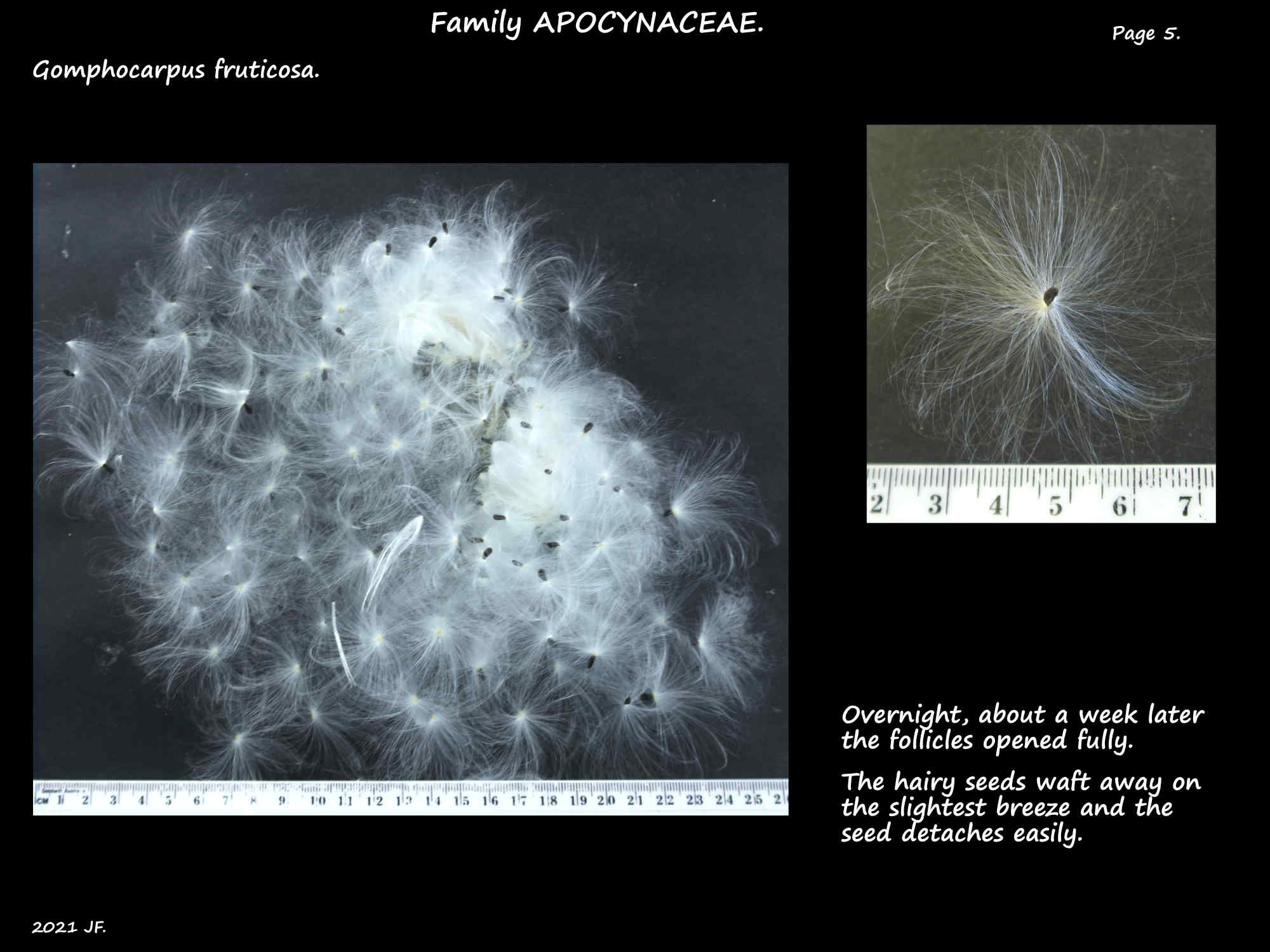Gomphocarpus fruticosus.
Family Apocynaceae > Subfamily Asclepiadoideae.
G. physocarpus the Balloon Cottonbush and G. fruticosus the Narrow-leaved Cotton
Bush are naturalised in Queensland.
They are erect, annual or perennial shrubs to 2 m high.
They only have a few thin stems and the parts contain a milky latex.
The leaves, on petioles to 1 cm long, are opposite and decussate.
The young stems and leaves are covered in fine hairs.
The linear to narrowly lanceolate blades are up to 12 cm long and 1.5 cm wide.
Older leaves may have a few hairs.
Inflorescences arise between the petiole bases.
They are umbels with 5 to 10 pendulous flowers.
Flower stalks, up to 2 cm long, have bracteoles at the base.
Flowers, with parts in 5’s, are up to 1 cm long and 1.5 cm across.
White, cream or greenish with pink or mauve tints, they flower for much of the year.
The narrowly triangular sepals, 3-4 mm long, are hairy on the outside.
The short corolla tube has lobes that flare out then later curve backwards.
The lobes, about 8 mm long, are densely hairy.
The stamen filaments are fused to form a column.
There are 5 pouched lobes (staminal corona) attached to this by their bases.
Folded vertically and open at the top the lobes contain nectar.
They are 2 to 3 mm high and 2 to 2.5 mm wide.
At the upper, inner corners of the rim are teeth or beaks.
In G. fruticosus there are 2 curved teeth.
In G. physocarpus the corners are more variable with a small rounded or large divided lobe;
or small to large sickle-shaped teeth.
The staminal column surrounds the 2 separate ovaries and styles.
The 2 stigmas are fused into a large fleshy 5-angled, flat or depressed disc.
The anthers are fused to the sides of the disc forming a gynostegium.
The pollination apparatus is as described in the Asclepiadoideae section of the Apocynaceae file.
The fruit are inflated, roundish follicles 6 to 7 cm long covered in soft spines.
In G. fruticosus the end is a short, curved beak.
In G. physocarpus the end has no beak and may be indented.
The 5 mm long ovate seeds have silky hairs at one end.
G. fruticosus and G. physocarpus hybridise readily so intermediate forms can be found.
J.F.
